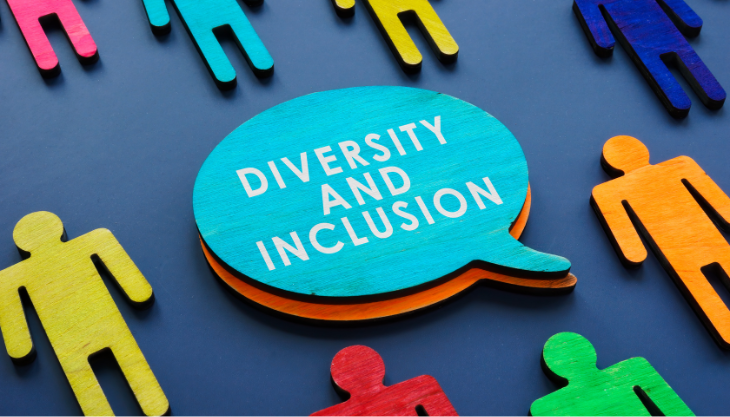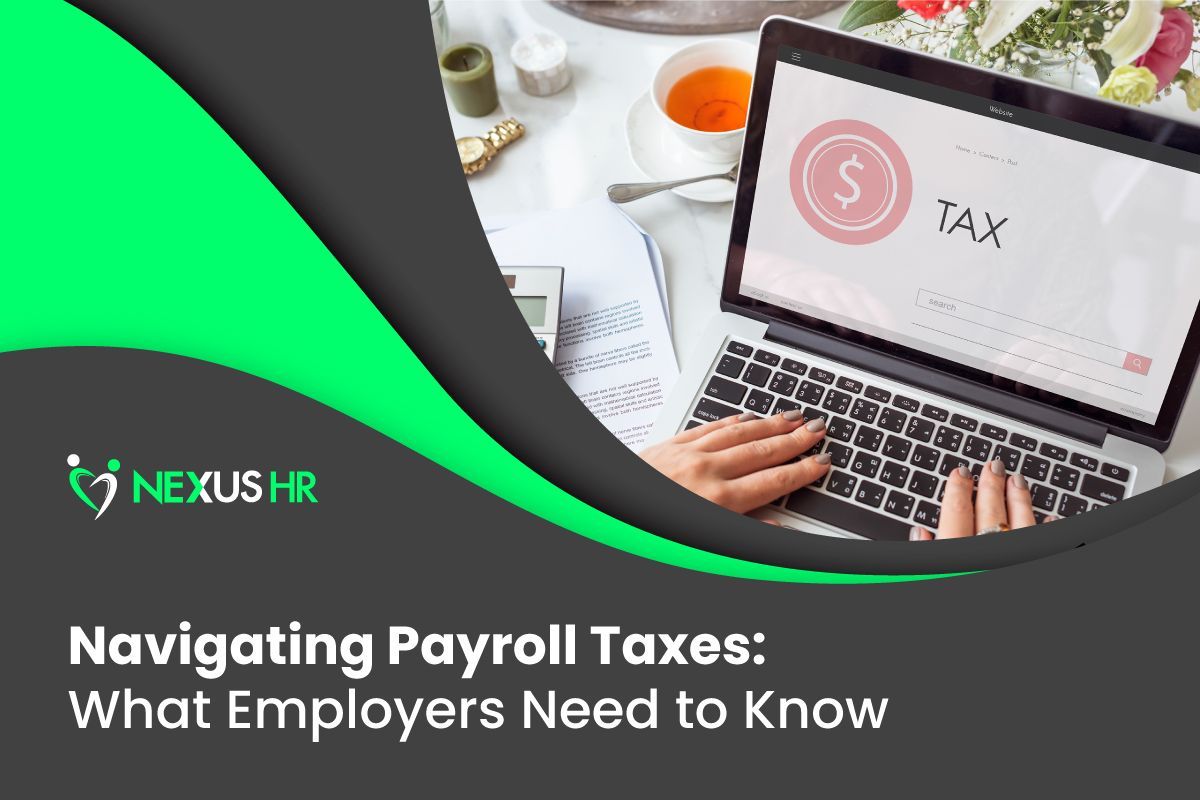Diversity and Inclusion in the Workplace: HR Best Practices
As we stand at the brink of 2024, organizations find themselves at an ideal vantage point—one that allows them to look back and reflect on their diversity and inclusion efforts the past year but also to look forward and gear up for what lies ahead.
This pivotal juncture is a call to action. Now more than ever, your company can examine current practices, celebrate achievements, and revisit your commitment to diversity, equity, and inclusion (DEI).
It’s the perfect time to recalibrate strategies to ensure that your workplace sees DEI as more than trendy buzzwords or a checklist of policies but an integral aspect of your corporate ethos.
What Does Diversity and Inclusion at Work Mean?

Global management consulting firm McKinsey & Company defines diversity and inclusion as values that organizations strive to embody to help meet the needs of people from all walks of life.
While diversity and inclusion efforts are often grouped and executed simultaneously, they are two different concepts.
According to the software company
Culture Amp,
diversity
is the range of human differences, including but not limited to race, ethnicity, gender, sexual orientation, age, social class, etc. It refers to the fair and equal representation of varying demographics within a workplace.
On the other hand,
inclusion
is making a person part of a group or collective, where each member is afforded the same rights, level of respect, opportunities, and engagement in the workplace, regardless of their demographics.
As inclusion strategist
Vernā Myers quite aptly phrases it, “Diversity is being invited to the party. Inclusion is being asked to dance.”
Read More:
What Is DEI in the Workplace?
Diversity and Inclusion Best Practices for Your HR Team

While company leaders play a crucial role in diversity and inclusion efforts, they can’t do it alone. You need the active participation of everyone in the organization.
Your
human resources (HR) team, in particular, plays a pivotal role in planning, implementing, and evaluating your company’s DEI strategy. If you don’t already collaborate with your HR department, now would be a good time to start.
Here are some inclusion and diversity best practices that can guide them as your organization enters 2024:
Ensure Leadership Commitment and Accountability
Because of its multifaceted role as the bridge between employer and employees, your HR team needs to ensure that leaders at all levels of the organization are committed to diversity and inclusion. They must also be able to hold leadership accountable for creating and maintaining an inclusive culture through measurable goals and transparent progress reporting.
However, before your HR team can do this, you need to ensure that the leaders in your company understand the problem. As
Boston Consulting Group puts it, “If leaders lack a clear understanding of the problem, they can’t design effective solutions.”
Leadership must be able to see and recognize obstacles to diversity and inclusion in the company. One way to do this is by promoting a more diverse management team.
The State of Workplace Diversity, Equity, and Inclusion in the United States and Canada 2023 report reveals that more than half (52%) of the people from marginalized groups lack an active role in DEI policy/action. To foster a diverse and inclusive workplace culture, you must give people with first-hand experience of its challenges a voice and a seat at the table.
Restructure Recruitment and Selection Process (If Necessary)
If your company doesn’t practice inclusive hiring, your HR team may need to restructure your recruitment and selection process to ensure that you do. HR decision-makers believe inclusive hiring practices are a business imperative, as it has been proven to help their organization to:
- Attract talent (63%)
- Fill skills gaps (63%)
- Retain talent (63%)
- Improve customer service (63%)
- Increase innovation (63%)
- Boost performance (63%)
- Reduce costs (63%)
While a total restructuring may sound like a considerable effort, your HR team can take it one step at a time. Here are a few ways they can kickstart the revamp:
- Implement a blind recruitment process. This means your recruitment team doesn’t see demographic characteristics that may trigger bias.
- Partner with diverse recruitment channels and organizations.
- Provide unconscious bias training for hiring managers and interviewers.
- Modify job descriptions to avoid gender-charged words.
Read More:
How To Write The Perfect Job Description
Celebrate Differences
Celebrating differences is a crucial part of DEI efforts because it promotes a culture that values and embraces the unique qualities, backgrounds, and perspectives of every individual within an organization. It helps companies foster a sense of belonging and inclusivity, empowering employees to bring their authentic selves to the workplace.
Your HR team can look into current policies and see that they are culturally sensitive, use gender-neutral language, allow for individual expression, accommodate religious observances, and are communicated clearly.
You can also look into implementing flexible work policies that accommodate diverse needs, such as remote work options, flexible hours, and family-friendly policies. Employee benefits, such as healthcare and wellness programs, must also be inclusive and meet the workforce's diverse needs.
Read More:
Why You Need to Care About Religious Accommodation in the Workplace
Provide Training and Education
According to The State of Workplace Diversity, Equity, and Inclusion in the United States and Canada 2023 report, 61% of employees admit that they have not received any DEI training from their employer, and only 24% claim to have received it during onboarding.
By offering ongoing diversity and inclusion training, your HR team can help your employees better understand diversity issues, unconscious biases, and the significance of creating an inclusive environment. Here are a few things they can consider when designing the DEI training plan:
- Conduct a thorough assessment of your company’s current diversity and inclusion landscape and identify its challenges, cultural nuances, and areas needing improvement.
- Prepare comprehensive training content that addresses various diversity dimensions like race, gender, ethnicity, sexual orientation, abilities, and age. Include topics like cultural competence and microaggressions.
- Consider various learning styles and preferences. Incorporating interactive elements, case studies, and real-world scenarios can enhance engagement.
- Provide resources for continuous learning and development.
- Clearly define the objectives of your training plan and establish measurable metrics to assess its impact and effectiveness.
- Regularly update your training materials and methods to keep the content relevant and responsive to emerging DEI challenges.
Read More:
Employee Training Tips for Successful Onboarding
Promote Sustainable Change
“While trainings, at best, can help raise awareness of inequality, they should not take precedence over more meaningful courses of action, such as policy changes, that are more time intensive and costly but provide lasting changes,” says experimental psychology researcher Jeffrey To.
Sustainable change in a company’s diversity and inclusivity outlook is a holistic, ongoing process. It is a profound commitment to long-term transformation and lasting impact, so your HR department needs to go beyond one-off training sessions. You need an approach that evolves with societal changes, organizational growth, and shifts in workforce dynamics.
If you want your organization to have a sustainable diversity and inclusivity initiative, your leadership and HR team must commit to ongoing accountability. Establish measurable goals, track progress, and hold leaders and employees accountable.
Read More:
5 Ways to Improve Inclusivity in the Workplace
Build a Diverse and Inclusive Corporate Culture with Nexus HR

Your HR team is instrumental in championing diversity and inclusion efforts. By creating policies, fostering a diverse talent pipeline, educating employees, ensuring compliance, and helping resolve conflicts, they can work hand-in-hand with leadership to embed DEI principles into the company's culture.
However, propelling the development of a DEI framework in your organization is a massive responsibility for a small HR team that’s already juggling several other tasks like
payroll and employee engagement. You need all the support you can get, and
Nexus HR is here to give that!
As a full-service HR solutions company, Nexus HR’s team of
remote human resources experts can take on tedious administrative tasks so you and your team can focus on more important matters. Outsource all the busy work to us and build the company culture of your dreams.











